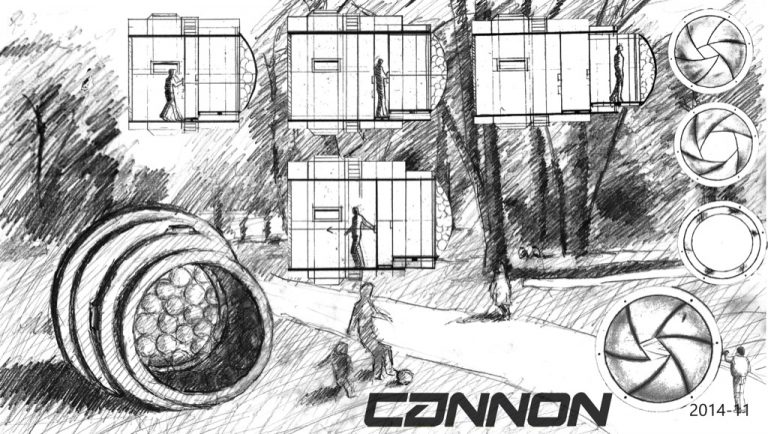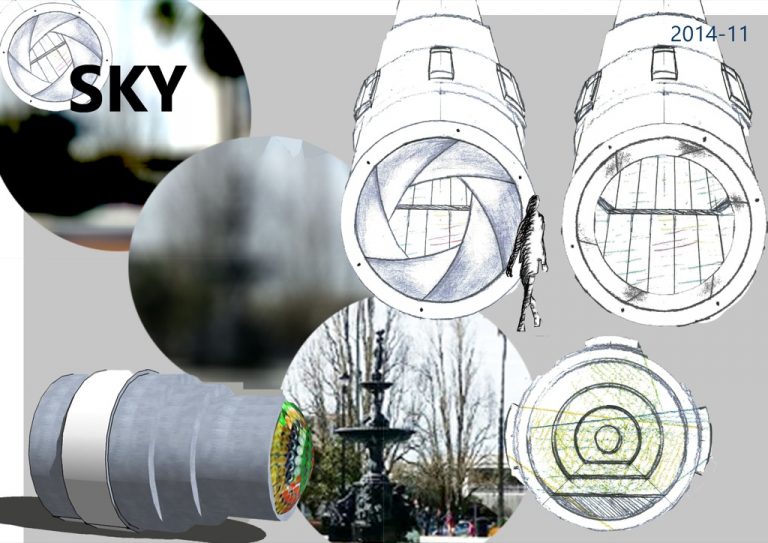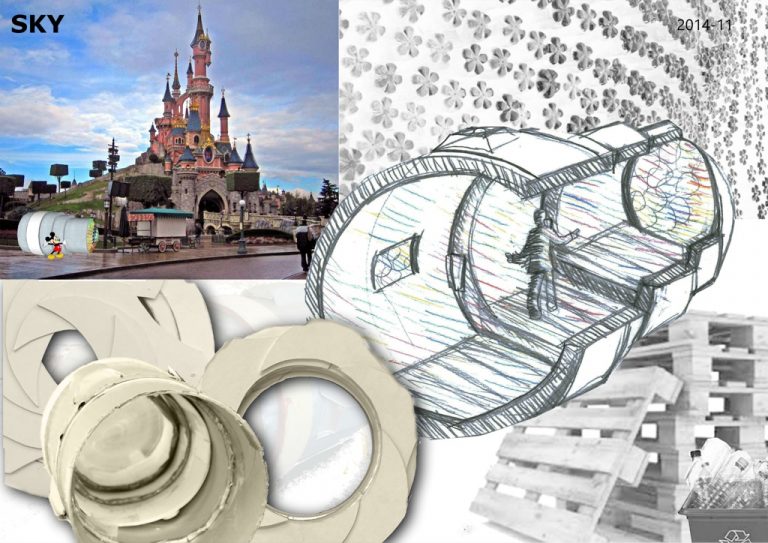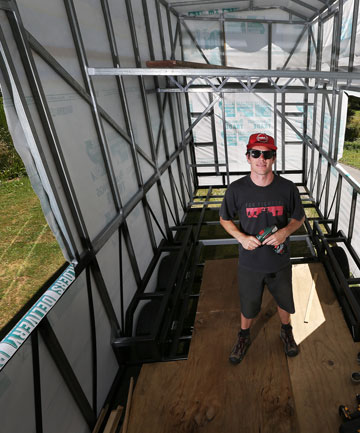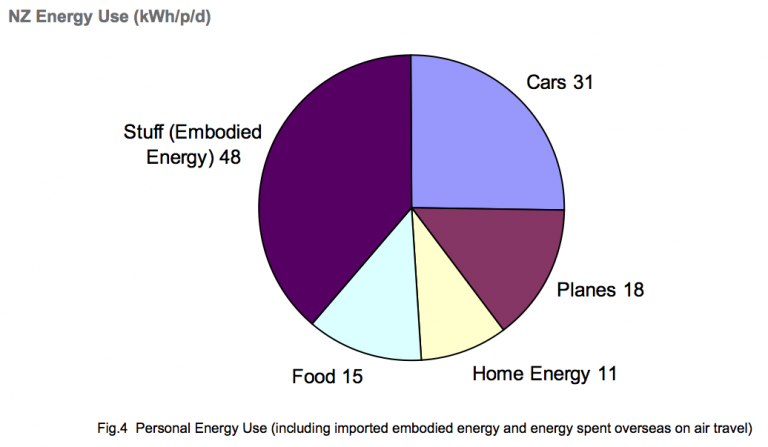Christchurch student fed up with high rental costs is building his own “cottage on wheels”.
Stefan Cook is constructing the 2.5 metre by 8m transportable house in a bid to beat the rising cost of student housing and survive the Government’s withdrawal of student allowances for those undertaking post-graduate study.
The 34-year-old geology student at the University of Canterbury said he had been paying up to $160 for a room in a Christchurch flat during the first two years of his bachelor’s degree and expected his $15,000 project would pay for itself within two years.
via Student thinks small to beat rental trap | Stuff.co.nz.
Range and Power – Tesla convoy comes to Dunedin
Otago Polytechnic this Sunday 11th Jan at noon. 0-100km in 4 seconds.
See https://www.facebook.com/LeadingTheCharge for other locations around New Zealand.
A new kind of kiwi road trip is amp’ing up, as four kiwi blokes: Steve, Jay, Carl and Nick travel from Cape Reinga to the Bluff in a convoy of sustainable prowess.
The group #leadingthecharge are highlighting the practical and sustainable benefits of using electric cars. To drive home their message they’re cruising the length of the country in New Zealand’s first Tesla Model S car, and its only Telsa Roadster. Va va vroom!
According to the group New Zealand is ideally situated to benefit from the uptake of electric cars. “After the dairy industry, the next biggest source of emissions is our vehicle fleet, and since over 70 per cent of our electrical power is from renewable sources, there’re even bigger emissions savings with an electric fleet here than overseas.”
On their way South the foursome are stopping in to charge up at Otago Polytechnic’s workSpace. “We’re delighted to support the initiative and vision of these four kiwi men,” said workSpace spokesperson, Veronica Stevenson and “given our work in the sustainability and tech transformation space, workSpace is the ideal place for a meet, greet and test drive.”
The goals of #leadingthecharge are three fold
- Charging – We aim to encourage private and public entities to roll out charging infrastructure all through New Zealand.
- Driving – We want people to get into Electric Vehicles. Test-drives, car sharing, renting, owning. We don’t care how you do it; we just want people in these cars.
- Teaching – There are so many untruths circulating about EV (electric vehicle) technology. We want to share true, well-researched and transparent messages about EV and all the benefits of EV ownership for individuals and New Zealand as a whole
All members of the public are warmly invited to attend this unprecedented event. Bring a friend, or the whole family – it isn’t often an event comes along that appeals to car enthusiasts and greenies alike.
WHERE: workSpace – A Block, Otago Polytechnic (across the road and up the grassy bank from the hockey turf on Harbor Tce)
WHEN: 1130am Sunday the 11th January
MEDIA CONTACTS:
Veronica Stevenson: Story Strategist at workSpace, 027 4483036 veronica.stevenson@op.ac.nz
Tim Bishop
SHAC | The Sustainable Habitat Challenge
www.shac.org.nz
021 705 346
It would not be too factitious to suggest that many traffic engineering standards seem to presume that land is free. It’s as is if there are dutch pixies at the bottom of the garden who are manufacturing land from the sea.
One example of such a standard is the concept of the “design vehicle”, which I will focus on for the remainder of this post. Of course there are many other examples of traffic engineering standards, such as minimum parking requirements, which have been discussed before on this blog and that also have hugely negative consequences. The reason I want to focus on the “design vehicle” concept is because it does not receive much attention. And also because it has a fundamental impact on so many things.
For those who are not familiar with the “design vehicle” concept let me briefly explain. The “design vehicle” is a phrase that typically describes the largest, heaviest (per axle), and/or least maneuverable vehicle that is expected to use a particular part of the road network. Naturally, the physical footprint required to accommodate this design vehicle subsequently defines most aspects of the physical road geometry, such as turning radii and pavement design. For this reason, the shape of our road networks is very much defined by the design vehicle that is chosen.
You can read up on some of the design vehicle standards recommended by the NZTA here. The design vehicle for the standard street is typically some form of medium rigid truck, such as what is commonly used to move furniture. I’ve illustrated the physical dimensions of this vehicle below.
Read more at: How traffic engineering standards can break our cities « transportblog.co.nz.
Students win national design award for 10sqm building
The design brief was simple – create a breakout space that didn’t require consent and incorporated sustainability, and now four Otago Polytechnic Design students have won the national Sustainable Habitat Construction (SHAC) Pop-up Challenge for their design of an innovative and efficient ten square metre building.
Studio56 was conceived by third-year Design students, Dean Griffiths, Alice Perry, Nina Daniels and Charlotte McKirdy, and was developed to provide a unique learning and collaboration environment for both students and staff, within Otago Polytechnic’s Living Campus – a vibrant community garden and a sustainable model of urban agriculture.
via Students win national design award for 10sqm building | Scoop News.
So, you know you want a sustainable (healthy, efficient, affordable and desirable) home, but where do you start? I’ve covered the fundamentals of what makes a good energy efficient home, but these are details. What’s the big picture? Where do you start a sustainable house?
Why…what?
Before getting too specific about your plan, here are some questions I recommend being able to answer:
- Why are you renovating/building/remodelling/looking for a new home?
- What are you most dissatisfied with at the moment?
- How many people are you building for?
- How much time are all these people actually going to spend in your home each day, each week, each month…?
- What do you want your weekends to look like?
- Describe your ‘perfect day’. Who are you with? Where are you? What are you doing?
- Does you perfect day involve any of the following:
- Mowing the lawn
- Fixing a fence
- Painting a fence
- Cleaning windows
- Cleaning a pool
- Walking a dog
- Vacuuming
- Cleaning three bathrooms
- Painting the house
- Cleaning the house
- Going on adventures with your family
- Oiling a deck
- Blowing/sweeping leaves
- Gardening
- Relaxing by the pool
- Working a second job
- Being at the beach
- Harvesting vegetables and fruit from your own garden
- Watching someone else do any of the above
What’s all this got to do with the location and layout of your dream home? A lot. Creating a better, sustainable place to live is about lifestyle. This is where you need to start.
When Natalie and I moved to Auckland our criteria for a place to live included:
- Walking distance to a primary school with a good reputation
- Walking distance to a train station and a train commute of 30 minutes or less
- At least three bedrooms, ideally four (Xavier, our third child had just been born, and we wanted to the option of a home office)
Money
The next big question is about budget. There are two big questions here:
- How much do you want to pay each month to own and operate a healthy, safe home?
- How much money do have to design, consent, building and finish your project?
They’re both related. The more you borrow, the more your monthly expenses are going to be. The more you invest on good design, insulation and solar power, the less your monthly running costs are going to be.
As painful, boring or frustrating as it might be, it’s worth spending some time here. Most of the designers I speak to say that a client’s true budget is one of the hardest things to pin down. Knowing exactly how much money you’re wanting to spend and being honest about this upfront will save time money and disappointment by avoiding uneasy scope changes when you do start talking to a designer.
Read more at the excellent “Where do you start a sustainable house?.”
How to: Get resource consent
What’s it for?
A resource consent gives approval for things like the use or subdivision of land, the taking of water, the discharge of contaminants in water, soil or air, or the use or occupation of coastal space.
So you could say it’s to look after the resources that will support not only your home, but the area you live in.
How do you get it?
You write an application that says why your project falls within the bounds of the Resource Management Act and relevant local regulations and policies, and you pay a fee.
In practice, most people get someone else to do that for them and according to Dr Roger Blakeley (chief planning officer for Auckland Council) there is an “expectation that you would employ a professional” for this process.
But when I looked into it, it was going to cost between $10,000 and $15,000 to get someone to write our application, so I wrote it myself.
via How to: Get resource consent | Stuff.co.nz.
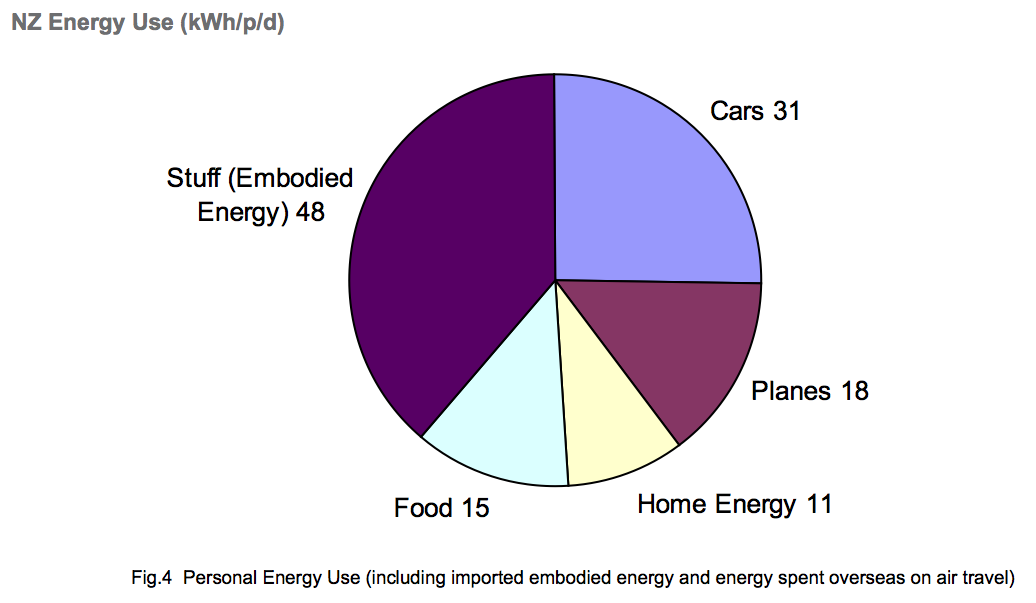
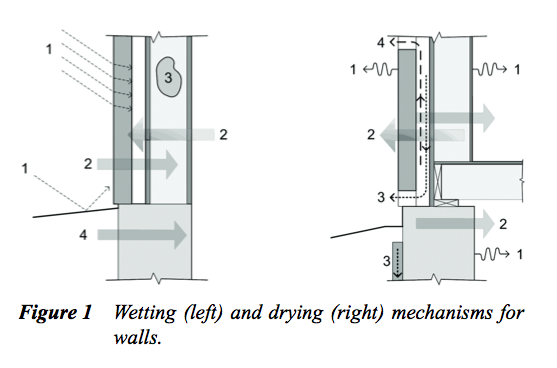

[Excerpted from Finch and Straube, 2007]
“It is well accepted that moisture is one of the primary
causes of premature building enclosure deterioration. Excess
moisture content combined with above-freezing temperatures
for long enough will cause rot, mold growth, corrosion, and
discoloration of many building materials. The four major
moisture sources and transport mechanisms that can damage
a building enclosure are (Figure 1, left side):
- Precipitation, largely driving rain or splash-back at grade
- Water vapor in the air transported by diffusion and/or air
movement through the wall (both to interior and exterior) - Built-in and stored moisture, particularly for concrete or
wood products - Liquid and bound ground water, driven by capillarity and
gravity
At some time during the life of a building, wetting should
be expected at least in some locations. In the case of a bulk
water leak, drainage, if provided, will remove the majority of
the moisture from the wall cavity. However, a significant
amount of water will remain absorbed by materials and
adhered to surfaces. This remaining moisture can be removed
(dried) from the wall by the following mechanism (Figure 1,
right side):
- Evaporation (liquid water transported by capillarity to the
inside or outside surfaces) - Evaporation and vapor transport by diffusion, air leakage,
or both either outward or inward - Drainage of unabsorbed liquid water, driven by gravity
- Ventilation by convection through intentional (or unintentional) vented air cavities behind the cladding
A balance between wetting, drying, and storage is
required to ensure the long-term durability of the building
enclosure.”
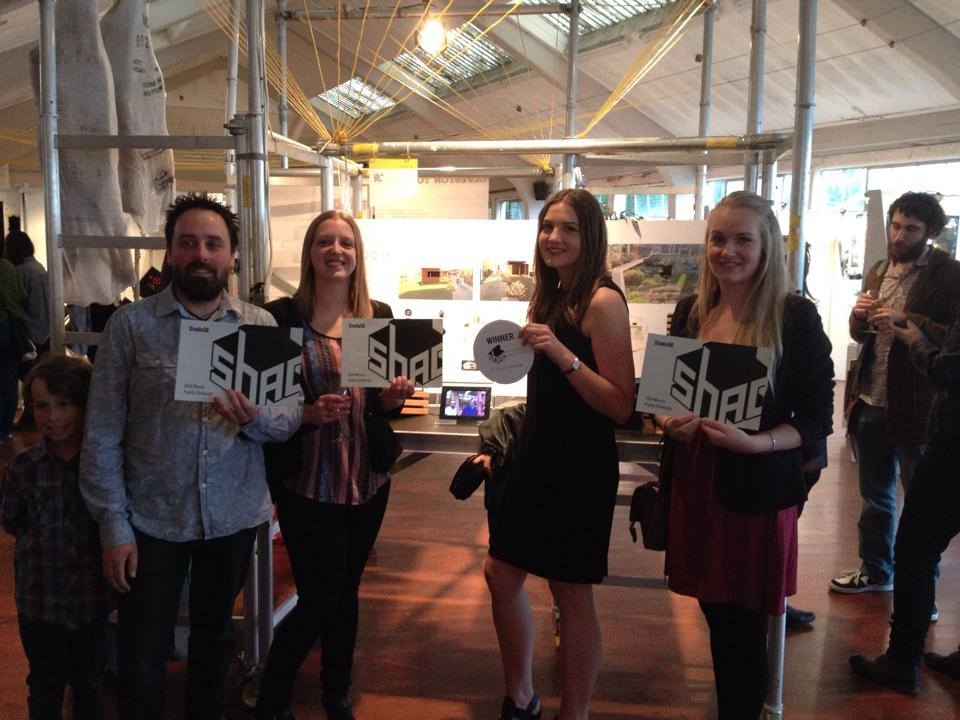
SHAC Popup Challenge 2014
2014 SHAC Popup Challenge winners have been announced!

The winners Mizu Tea House pops-up in busy, downtown Auckland to provide an escape from demanding daily life, and Studio56 is a Dunedin break-out space that provides a unique learning and collaboration environment.
Highly commended, Flowing Tyres is an urban garden like pavilion.
The teams are now working to build their projects. Which team will finish first?
Over 50 submissions were received from all over New Zealand. Teams worked to design a playful pop up structure to help designers, builders and the public better understand the art and science of sustainable building. Teams responded to the challenge to show how we all can live well with less need for resources. SHAC promotes design as a collaborative, playful process that generates and evolves good ideas. Winners receive a SHAC trophy, a mark of industry accolades.
About SHAC
[SHAC] is a network of designers, builders, engineers, and architects who want to build a better way. SHAC is addressing the need for a more sustainable built environment. We host competitions and workshops to find good ideas and connect people. We work on innovative small-scale building projects for clients and their community.
Contacts
Tim Bishop, Coordinator, SHAC | 021 705 346
Laura May, Team Coordinator, Mizu Tea House | 021 118 6039
Alice Perry, Team Coordinator, Studio56 | 027 335 1654 –> Press Release
Naomi Thompson, Team Coordinator, Flowing Tyres | 022 646 2818
Canon [2014-11]


Meet Canon, an environmentally friendly piece of architecture that gives a most unique portrayal of light. It’s a giant walk-in telescope, with the added aesthetic of providing its very own light show. Given our current economic predicament, it’s becoming more and more important that we respect the environment, thus Canon is constructed using recycled plastic and bottles, promoting the re-use of materials and less on the reliance on money. The theory behind the lens is rather quite simple, yet ingenious; light when shown upon the ‘lens’ is refracted in several directions – similar to the experience of being inside a kaleidoscope. When the lens are extended manually, the environment in which it is placed is instantly distorted, allowing the user to experience a different kind of world, a parallel world perhaps or even a unique abstract dimension, effectively superimposing its own personality which can be felt by anyone within its boundaries.

